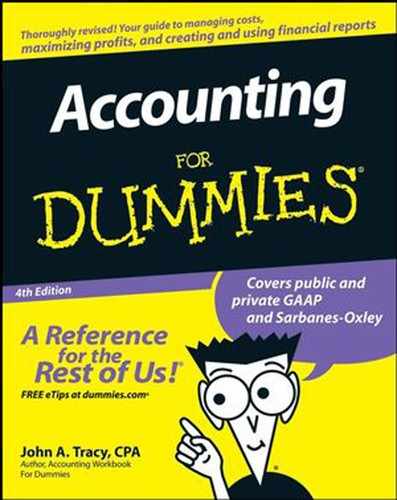7.1. Reading Statements with a Touch of Skepticism
Suppose that you have the opportunity and the ready cash to buy a going business. The business I have in mind is the very one I use as the example in the previous three chapters in which I explain the income statement (Chapter 4), the balance sheet (Chapter 5), and the statement of cash flows (Chapter 6). Of course, you should consider many factors in deciding your offering price. The company's most recent financial statements would be your main source of information in reaching a decision — not the only source, of course, but the most important source for financial information about the business.
|
7.1.1. Recognizing a business's bias
Some people put a great deal of faith in numbers: 2 + 2 = 4, and that's the end of the story. When they see a dollar amount reported to the last digit in a financial statement, they get the impression of exactitude and precision. But accounting isn't just a matter of adding up numbers. It's not an exact science. Some even argue that accounting is more art than science, although I wouldn't go that far (and I certainly wouldn't trust any numbers that Picasso came up with — would you?). Accounting involves a whole lot more subjective judgments and arbitrary choices than most people think.
NOTE
Only one set of financial statements is included in a business's financial report: one income statement, one balance sheet, and one statement of cash flows. A business does not provide a second, alternative set of financial statements that would have been generated if the business had used different accounting methods and if the business had not tweaked its financial statements. Therefore, you see only one version of the financial performance and position of the business. But behind the scenes the controller and managers know that the company's financial statements would have been different if different accounting methods had been used to record sales revenue and expenses and if the business had not engaged in certain end-of-period maneuvers to make its financial statements look better. (My father-in-law, a retired businessman, calls these tricks of the trade "fluffing the pillows.")
|
7.1.2. Contrasting aggressive and conservative numbers
As the potential buyer of a business, you have to decide on an offering price. You have to decide what the business is worth. Generally speaking, the two most important factors are the profit performance of the business (reported in its income statement) and the composition of assets, liabilities, and owners' equity of the business (reported in its balance sheet). For instance, how much would you pay for a business that has never made a profit and whose liabilities are more than its assets? There's no simple formula for calculating the market value for a business based on its profit performance and financial condition. But, quite clearly, the profit performance and financial condition of a business are dominant factors in setting its market value.
Figure 7-1 shows a comparison that you never see in real-life financial reports. The Version A column in Figure 7-1 presents the income statement and balance sheet reported by the business. The Version C column reveals an alternative income statement for the year and an alternative balance sheet at year-end that the business could have reported (but didn't). I don't present an alternative statement of cash flows, for reasons I explain later in the chapter.
Assuming you've read Chapters 4 and 5, the account balances in the Version A column should be familiar — these are the same numbers from the financial statements I explain in those chapters. The dollar amounts in the Version C column are the amounts that could have been recorded using different accounting methods.
Figure 7.1. Two versions of financial statements for the business.

The "A" in Version A stands for actual and aggressive. What I mean by aggressive is that the business adopted accounting methods that maximize its recorded profit, and it used certain techniques to make its year-end financial condition look as positive as possible.
Some businesses go the opposite direction. They adopt conservative accounting methods to record profit performance, and they wouldn't think of tinkering with their financial statements at the end of the year, even when their profit performance falls short of expectations and their financial condition has some trouble spots. In Figure 7-1, the "C" in Version C stands for conservative and cautious.
Now, you may very well ask, "Where in the devil did you get the numbers for Version C?" The dollar amounts in Version C are my best estimates of what conservative and cautious numbers would be for this business — a company that has been in business for several years, has made a profit most years, and has not gone through bankruptcy.

